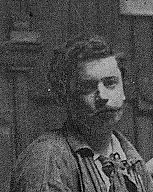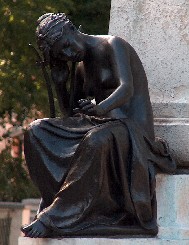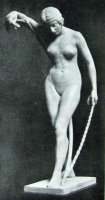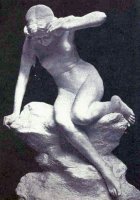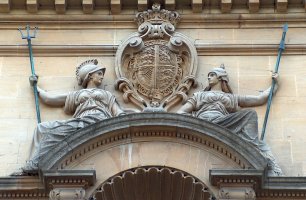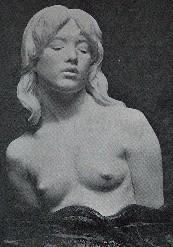Andrea Carlo Lucchesi (1860-1925)
Lucchesi in his studio
Andrea Carlo Lucchesi, of Italian and English origin, specialised in the female nude figure, in the style known as 'the New Sculpture', his best works being produced in the 1890s through to the early 20th Century.
The sculptor A. C. Lucchesi was born in London, the son of an Italian sculptor's moulder from Tuscany, and an English mother. He became assistant to his father, then studied at the West London School of Art, and worked as an assistant (at first as a moulder) to several important sculptors, including H. H. Armstead and E. O. Ford. He also worked at one time and another as a model painter, carriage decorator, sculptor's model and furniture painter, as well as modelling for silversmiths such as Elkington and Garrards.
As a sculptor, his first original conception was exhibited at the Royal Academy in 1881, and the following year his Waif won him entrance to the Royal Academy Schools, where he was a successful student over five years.
Lucchesi favoured above all the nude female figure. Among his ideal nudes are The Flight of Fancy, Destiny, Oblivion, The Vanishing Dream, The Soul of the Rose, Oblivion, A Water Nymph and A Woman of Carthage. Along with these single figures are several groups of a girl and an infant, including Verity and Illusion, The Bud and the Blossom and (with three figures rather than two) The Two Voices. Of such works, Lucchesi said that he considered
'... the female figure [to be] nature's masterpiece, and the fact that I have so often used it, to endeavour to convey or symbolise a poetic thought, shows how strongly I feel this.'
